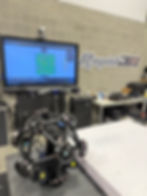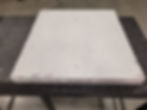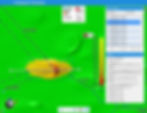From Field to Forecast: How We’re Powering Canada’s Hail Research with 3D Scanning Insights
- 3dinfo2
- Aug 11
- 4 min read
This blog references the official Northern Hail Project 2022/2023 Annual Report

Rebuilding Canada's Hail Science, One Dent at a Time
In Canada, hail is more than a weather inconvenience. It is a billion-dollar problem. That became clear after the devastating August 5, 2024 Calgary hailstorm, which caused $3.29 billion in insured damage. The urgency to understand and reduce the risks of severe hail events led to the creation of a pioneering research initiative: the Northern Hail Project (NHP).
The NHP was launched in 2022 under Western University’s Canadian Severe Storms Laboratory (CSSL). The CSSL itself was officially launched in the fall of 2024. Funded by NSERC, Western University, and supported by partners including the Institute for Catastrophic Loss Reduction (ICLR) and the University of Manitoba, the NHP is building Canada’s first comprehensive hail climatology. In simple terms, a hail climatology is an objective record of where and when hail has occurred in a region over time. This kind of dataset helps researchers identify long-term patterns, compare storm activity between areas, and improve forecasting accuracy. The project also works to improve real-time forecasting and develop damage mitigation strategies.
At the center of this work is a deep commitment to accurate field data. That is where Rapid3D came in.
Rapid3D’s Role in the Northern Hail Project
A key component of the NHP's ground research is the use of hailpads. These foam pads are deployed across Alberta’s “Hail Alley” and are engineered to capture the impacts of falling hailstones. Each dent in the foam tells a story about the size, speed, and force of the hailstone that hit the pad.
But capturing these impacts in a meaningful way requires accurate digital records. That’s where we were able to help. Our objective was threefold:
3D scanning approximately 200 hailpad surfaces collected from the field
Deliver high-resolution STL mesh files that NHP partners can use to develop internal hail damage analysis tools
Provide 10 detailed and accurate inspection reports using Creaform’s VXintegrity software, based on hailpads selected by the NHP team
This data allows NHP researchers and collaborators to verify and calibrate their own systems, helping to create a consistent and scalable approach to hail impact assessment.
From Hailpad to STL: The 3D Scanning Process
We captured the surface of each hailpad with sub-millimeter accuracy using Creaform’s MetraSCAN Black Elite 3D scanner. The MetraSCAN, paired with the C-Track, allowed us to precisely position the scanner across the entire damaged surface. A key advantage of the MetraSCAN is its large scanning volume and ability to capture an entire hailpad in a single view, which streamlined our workflow considerably. This capability meant we could maintain a fast pace and high data integrity even on complex surfaces with hundreds of dents.

The raw scans were then cleaned and exported in STL format, providing the NHP researchers with clean, high-quality digital twins of every hailpad.
The scans serve as training data for new automated analysis tools being developed at Western University. These tools use 3D image processing and machine learning to detect dent counts, measure depths, and estimate hailstone size and impact energy.


Dent Detection in Detail: VXintegrity Surface Damage Analysis
To support deeper analysis, we scanned and evaluated 10 hailpads using VXintegrity Creaform’s specialized surface damage software. In particular, we used the Aerospace module which is designed specifically for the aviation and aerospace industry, analyzing surface dents on aircraft for MRO applications. While hailpads aren't aircraft panels, the software’s precision and algorithms work seamlessly for dent assessment on all types of geometries. This tool detects and measures dents based on 3D surface data and produces detailed reports that include:
Automatically detect and measure dent depth, diameter, and distribution
Generate color-coded heatmaps to visualize impact severity
Relevant references to ensure the position of the dents are reported to a known coordinate system
Export reports that highlight quantitative surface deformation data
These reports will be used by NHP collaborators to calibrate their own internal dent detection systems and improve model accuracy
These insights help the NHP team connect physical hail damage with radar data, weather models, and forecasting tools.


Visualizing the Results: Data That Speaks
While most of our STL datasets are used for research integration, the detailed VXintegrity reports provide a visual and repeatable way to interpret hail damage.

What’s Next
We are currently continuing our scanning and analysis efforts in coordination with the NHP team. The STL files and inspection reports we provide will be instrumental in shaping:
Future hail forecasting and nowcasting tools
Hail intensity scales for infrastructure resilience
Standardized hail damage modeling across sectors
Final Thoughts
This project sits at the intersection of meteorology, engineering, and digital technology. But none of it would be possible without the vision and leadership of the Canadian Severe Storms Lab at Western University. Through the Northern Hail Project, they’re rebuilding Canada’s hail science from the ground up - combining fieldwork, data, and collaboration in a way that hasn’t been done in decades.
We’re proud to support their efforts by turning hailpad impacts into precise, actionable data. One scan at a time, we’re helping transform how hail is studied, understood, and ultimately forecasted.
To learn more, visit the Northern Hail Project website.

